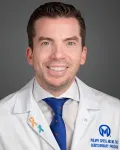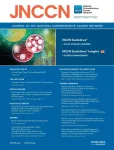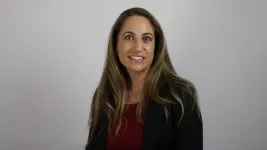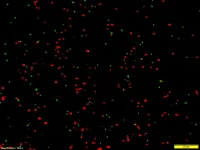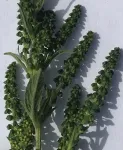(Press-News.org) Wetlands, coastal areas and offshore waters near Alabama, Louisiana and Texas have more inactive oil and gas wells than producing ones, and the cost to permanently plug and abandon them could be $30 billion, University of California, Davis, researchers suggest.
A paper published today in the journal Nature Energy examines the cost to plug 14,000 wells that are inactive, have not produced for five years and are unlikely to be reactivated in the Gulf of Mexico region, which is the epicenter of U.S. offshore oil and gas operations.
The wells could pose future environmental and financial risks to the public, and the cost differential for plugging onshore wells versus those in offshore waters is large, said Mark Agerton, an assistant professor at UC Davis and lead author of the paper.
Leaks from wells closer to shore are more likely to damage coastal ecosystems and release greenhouse gases like methane into the atmosphere, compared to wells in deep waters. The study found that more than 90% of inactive wells are in shallow areas, and the cost to plug those would be $7.6 billion, or 25% of a total $30 billion.
Informing policy decisions
“The wells aren’t supposed to be leaking into the environment, but sometimes they do,” said Agerton, of the Department of Agricultural and Resource Economics. “How do you get the most environmental benefit for the least amount of money?”
The findings could help states decide cleanup priorities, especially as they access $4.7 billion in federal money authorized by the Infrastructure Investment and Jobs Act. That money is set aside for methane reduction programs, including cleanup of old oil and gas wells, said Gregory Upton, an associate research professor at the Louisiana State University Center for Energy Studies and co-author of the paper.
“States have a pretty good idea of what it costs to plug these wells on land, but there is really a lot of uncertainty as to what the costs were for these offshore wells,” Upton said during a media briefing about the paper.
Liability for cleaning up wells abandoned in federal waters falls to prior owners if the current owner becomes insolvent and is unable to cover costs. Large American oil companies currently own or have owned 88% of the wells in federal Gulf of Mexico waters and would legally shoulder cleanup liabilities before taxpayers, Agerton said.
But in state waters, each jurisdiction handles liability differently, and prior ownership doesn’t come into play. States oversee plugging programs for orphaned wells whose owners have gone bankrupt, though the cost to plug an abandoned offshore well increases with the length of the well and the depth of the water.
“The bulk of the costs comes from plugging wells in deeper water where the environmental consequences are less than for a shallow well closer to shore,” Agerton said. “That money is probably better spent on state waters where they can’t go after prior owners for cleanup costs and it’s going to be a cheaper cleanup job with more environmental benefit.”
Siddhartha Narra, Brian Snyder and Gregory B. Upton Jr. of Louisiana State University, are co-authors on the research.
END
Cleanup of inactive Gulf of Mexico wells estimated at $30 billion, UC Davis researchers suggest
Waters off Alabama, Louisiana and Texas are home to 14,000 nonproductive wells
2023-05-08
ELSE PRESS RELEASES FROM THIS DATE:
New research in JNCCN finds telemedicine consistently outperforms in-person visits for cancer care when both are available
2023-05-08
PLYMOUTH MEETING, PA [May 8, 2023] — New research in the May 2023 issue of JNCCN—Journal of the National Comprehensive Cancer Network from Moffitt Cancer Center finds that telemedicine consistently outperformed in-person visits for both access to care and provider response, according to a long-term study on patient experience. Researchers analyzed survey responses from 39,268 patients across more than 50,000 visits. Telemedicine experiences were compared to in-person visits during and after the height of the COVID-19 pandemic, starting April 1, 2020, and running ...
Galactic bubbles are more complex than imagined, researchers say
2023-05-08
COLUMBUS, Ohio – Astronomers have revealed new evidence about the properties of the giant bubbles of high-energy gas that extend far above and below the Milky Way galaxy’s center.
In a study recently published in Nature Astronomy, a team led by scientists at The Ohio State University was able to show that the shells of these structures – dubbed “eRosita bubbles” after being found by the eRosita X-ray telescope – are more complex than previously thought.
Although they bear a striking similarity in shape to Fermi bubbles, eRosita bubbles are larger and more energetic than their counterparts. Known together as the “galactic ...
Baylor researchers explore effect of Instagram, TikTok on psychological well-being
2023-05-08
Contact: Kelly Craine, Baylor University Media and Public Relations, 254-297-9065
Follow us on Twitter: @BaylorUMedia
WACO, Texas (May 3, 2023) – Instagram and TikTok are two of the fastest-growing social media outlets in the U.S., offering entertainment and connection to a world-wide community with the ease of a finger swipe. Despite their growing popularity, little research has focused on the association between the specific use of Instagram and TikTok and a person’s psychological well-being.
Noted Baylor University smartphone researchers Meredith E. David, Ph.D., ...
Warmer climate could cause Puerto Rico’s frogs to croak #ASA184
2023-05-08
CHICAGO, May 8, 2023 – The coqui frog is one of Puerto Rico’s most iconic animals. It gets its name from its distinctive two-note call, “co-qui,” which can be heard throughout the island every night. The males of the species produce these calls to mark their territory and ward away rivals, but scientists can also use them to study the changing climate.
Peter Narins of the University of California, Los Angeles will describe changes in the calls of the coqui frog over a 23-year period in his talk, “Climate change drives frog call change in Puerto Rico: Predictions and implications.” The presentation will take place Monday, ...
Smallest shifting fastest: Bird species body size predicts rate of change in a warming world
2023-05-08
Photos
Birds across the Americas are getting smaller and longer-winged as the world warms, and the smallest-bodied species are changing the fastest.
That's the main finding of a new University of Michigan-led study scheduled for online publication May 8 in the journal Proceedings of the National Academy of Sciences.
The study combines data from two previously published papers that measured body-size and wing-length changes in a total of more than 86,000 bird specimens over four decades in North and ...
NSU research into bacteria may lead to new ways of treating infections, improving human health
2023-05-08
FORT LAUDERDALE/DAVIE, Fla. – “Know thy self; know thy enemy” - Sun Tzu
That quote is from centuries ago, but it is applicable in so many ways. One example – new research from Nova Southeastern University (NSU) is understanding human infections and unlocking how bacteria “work together” making these infections much more difficult to treat. But it is understanding this symbiotic relationship – knowing thy enemy – that can lead to better ways to treat various ailments.
This new study was recently published by the scientific journal eLife, and can be found ONLINE.
“There are good bacteria and not so good ...
New study finds that fitterfly diabetes digital therapeutics program improves blood sugar levels and promotes weight loss in patients with Type 2 diabetes
2023-05-08
A new research study published in JMIR Diabetes evaluated the real-world effectiveness of the Fitterfly Diabetes CGM digital therapeutic program for the management of glycemic control and weight in people with type 2 diabetes mellitus. The study led by Shilpa Joshi, Arbinder Singal, and colleagues found significant improvements in both blood glucose levels and weight management in participants enrolled in the 90-day program.
The Fitterfly Diabetes CGM program, delivered through the Fitterfly mobile app coupled with continuous glucose monitoring (CGM) technology, provides users with tailored recommendations on nutrition based on personalized ...
Novel Rutgers COVID vaccine may provide long-lasting protection
2023-05-08
Animal studies indicate that a new COVID-19 vaccine developed at Rutgers may provide more durable protection against SARS-CoV-2 and its emerging variants than existing vaccines.
“We need a better vaccine, one that provides years of robust protection with fewer booster shots against a variety of SARS-CoV-2 strains. Our data suggest this vaccine candidate might be able to do that,” said Stephen Anderson, associate professor of Molecular Biology and Biochemistry in SAS, resident member of the Rutgers Center for Advanced ...
Pollen production could impact climate change by helping clouds form
2023-05-08
For millions of people with seasonal allergies, springtime means runny noses, excessive sneezes and itchy eyes. And, as with many things, climate change appears to be making allergy season even worse. Researchers reporting in ACS Earth and Space Chemistry have shown that common allergen-producing plants ryegrass and ragweed emit more smaller, “subpollen particles” (SPPs) than once thought, yet climate would likely be most affected by their intact pollen grains, which can boost cloud formation.
In addition to annoying sinuses, pollen naturally functions as a ...
Plastic can drift far away from its starting point as it sinks into the sea
2023-05-08
Discarded or drifting in the ocean, plastic debris can accumulate on the water’s surface, forming floating islands of garbage. Although it’s harder to spot, researchers suspect a significant amount also sinks. In a new study in ACS’ Environmental Science & Technology, one team used computer modeling to study how far bits of lightweight plastic travel when falling into the Mediterranean Sea. Their results suggest these particles can drift farther underwater than previously thought.
From ...
LAST 30 PRESS RELEASES:
Making lighter work of calculating fluid and heat flow
Normalizing blood sugar can halve heart attack risk
Lowering blood sugar cuts heart attack risk in people with prediabetes
Study links genetic variants to risk of blinding eye disease in premature infants
Non-opioid ‘pain sponge’ therapy halts cartilage degeneration and relieves chronic pain
AI can pick up cultural values by mimicking how kids learn
China’s ecological redlines offer fast track to 30 x 30 global conservation goal
Invisible indoor threats: emerging household contaminants and their growing risks to human health
Adding antibody treatment to chemo boosts outcomes for children with rare cancer
Germline pathogenic variants among women without a history of breast cancer
Tanning beds triple melanoma risk, potentially causing broad DNA damage
Unique bond identified as key to viral infection speed
Indoor tanning makes youthful skin much older on a genetic level
Mouse model sheds new light on the causes and potential solutions to human GI problems linked to muscular dystrophy
The Journal of Nuclear Medicine ahead-of-print tip sheet: December 12, 2025
Smarter tools for peering into the microscopic world
Applications open for funding to conduct research in the Kinsey Institute archives
Global measure underestimates the severity of food insecurity
Child survivors of critical illness are missing out on timely follow up care
Risk-based vs annual breast cancer screening / the WISDOM randomized clinical trial
University of Toronto launches Electric Vehicle Innovation Ontario to accelerate advanced EV technologies and build Canada’s innovation advantage
Early relapse predicts poor outcomes in aggressive blood cancer
American College of Lifestyle Medicine applauds two CMS models aligned with lifestyle medicine practice and reimbursement
Clinical trial finds cannabis use not a barrier to quitting nicotine vaping
Supplemental nutrition assistance program policies and food insecurity
Switching immune cells to “night mode” could limit damage after a heart attack, study suggests
URI-based Global RIghts Project report spotlights continued troubling trends in worldwide inhumane treatment
Neutrophils are less aggressive at night, explaining why nighttime heart attacks cause less damage than daytime events
Menopausal hormone therapy may not pose breast cancer risk for women with BRCA mutations
Mobile health tool may improve quality of life for adolescent and young adult breast cancer survivors
[Press-News.org] Cleanup of inactive Gulf of Mexico wells estimated at $30 billion, UC Davis researchers suggestWaters off Alabama, Louisiana and Texas are home to 14,000 nonproductive wells


